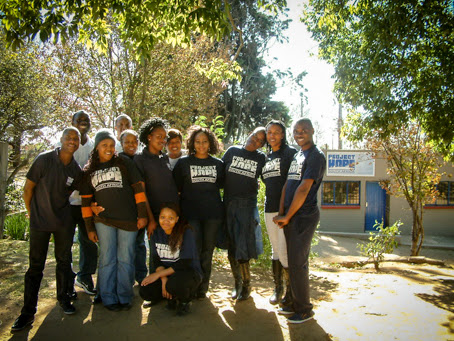Lindsay and I arrived in Johannesburg on May 12th and will be working for Project HOPE until June 7th. We are classmates at the University of Kentucky’s Patterson School of Diplomacy and International Commerce and have been looking forward to coming here since December.
 |
| Britta, Tsholo, and Lindsay |
During our first week here we got our feet wet by observing and participated in the many components of this Project HOPE site. We went door-to-door with community screeners, observed mass screenings in various locations in the township, visited the clinic and pharmacy, and attended information sessions on diabetes and hypertension.
Despite the overall focus of the HOPE
Centre on diabetes and hypertension, our focus for our time here is on economic
strengthening and its connection to health.
In order to encourage improved economic stability among community
members in Zandspruit, the HOPE Centre has established a Village Savings and
Loans (VSL) program. This program has
been implemented in other Project HOPE locations, but only began in Zandspruit
in March. The VSL program brings
together small groups of friends and community members to participate in
“co-banking”. Groups usually consist of
6-10 individuals and meetings last anywhere from 30 minutes to 3 hours. Members save individual amounts of money each
week and deposit it into the group bank account after each weekly meeting. Members may take out loans from the account
and are responsible for paying them back with interest in an allotted period of
time. Rules and regulations, such as
interest rates and fines, are determined by each individual group and recorded
in the group constitution. At the
beginning of the saving cycle, groups elect a chairperson, secretary,
treasurer, money counters, and health activist.
Ideally, after nine weeks of meetings with Tsholo, the HOPE Centre field
officer in charge of the VSL program, groups will be able to run
themselves. After that point, Tsholo
will drop in from time to time, but the group officers will ultimately be
responsible for running the meetings. A
saving cycle lasts for one year. At the
end of the cycle, all members receive the sum they have saved plus the shared
interest that has accumulated over the year.
 |
| Lindsay conducting a VSL baseline interview. |
Thus far we have had a fantastic experience
and found everyone at the HOPE Centre and Zandspruit to be incredibly
welcoming.
Britta Harman






















